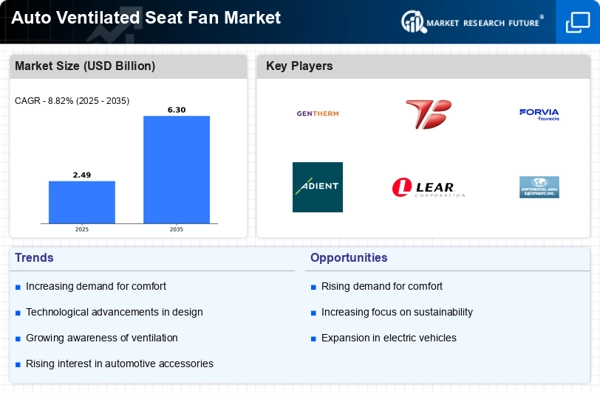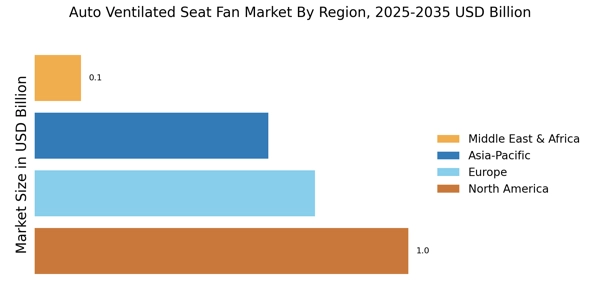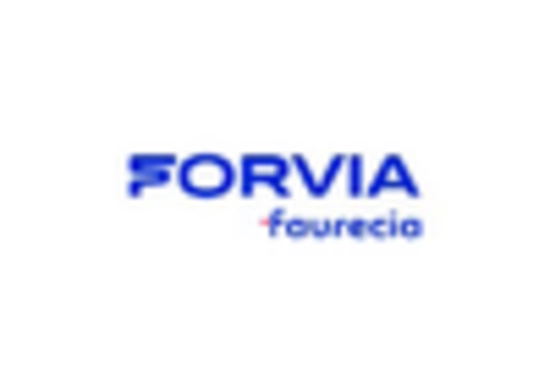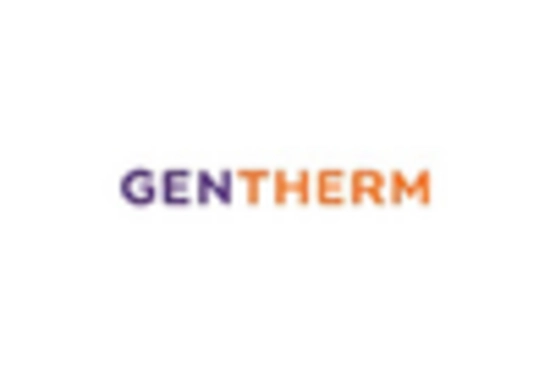Increasing Demand for Comfort Features
The Auto Ventilated Seat Fan Market experiences a notable surge in demand as consumers increasingly prioritize comfort in their vehicles. This trend is particularly pronounced in regions with extreme weather conditions, where the need for effective temperature regulation becomes paramount. According to recent data, the automotive sector has seen a 15% rise in the integration of comfort features, including ventilated seats, over the past three years. As consumers seek enhanced driving experiences, manufacturers are compelled to innovate and incorporate advanced ventilation systems into their designs. This growing expectation for comfort not only drives sales but also influences the overall design philosophy within the automotive industry, leading to a more competitive landscape. Consequently, the Auto Ventilated Seat Fan Market is poised for continued growth as automakers respond to these evolving consumer preferences.
Rising Awareness of Health and Wellness
The growing emphasis on health and wellness is influencing consumer choices within the Auto Ventilated Seat Fan Market. As individuals become more conscious of the impact of their environment on well-being, features that promote comfort and reduce fatigue are gaining traction. Ventilated seats, which help regulate body temperature and improve air circulation, are increasingly viewed as essential for long journeys. Market Research Future indicates that approximately 30% of consumers consider seat ventilation a critical factor when purchasing a vehicle. This heightened awareness is prompting manufacturers to prioritize the inclusion of ventilated seating options in their offerings. As a result, the Auto Ventilated Seat Fan Market is likely to expand as automakers respond to this shift in consumer priorities, integrating health-focused features into their designs.
Shift Towards Electric and Hybrid Vehicles
The transition towards electric and hybrid vehicles is reshaping the Auto Ventilated Seat Fan Market. As these vehicles gain popularity, manufacturers are increasingly incorporating advanced comfort features, including ventilated seats, to attract environmentally conscious consumers. The demand for electric vehicles has surged, with sales increasing by over 25% in the past year alone. This shift not only reflects changing consumer preferences but also highlights the importance of comfort in the electric vehicle segment. As automakers strive to differentiate their offerings, the integration of ventilated seating systems becomes a key selling point. Consequently, the Auto Ventilated Seat Fan Market is expected to grow as manufacturers adapt to the evolving landscape of the automotive market, focusing on features that enhance the driving experience in electric and hybrid models.
Technological Innovations in Automotive Design
Technological advancements play a crucial role in shaping the Auto Ventilated Seat Fan Market. Innovations such as improved fan designs, energy-efficient motors, and smart climate control systems are becoming increasingly prevalent. These technologies not only enhance the performance of ventilated seats but also contribute to energy savings, aligning with the automotive industry's broader sustainability goals. Recent statistics indicate that vehicles equipped with advanced ventilation systems have seen a 20% increase in consumer satisfaction ratings. As manufacturers invest in research and development, the integration of cutting-edge technologies is likely to redefine consumer expectations and drive market growth. The Auto Ventilated Seat Fan Market stands to benefit significantly from these advancements, as they enable automakers to offer superior comfort and efficiency in their vehicles.
Regulatory Support for Enhanced Vehicle Features
Regulatory frameworks are increasingly supporting the integration of advanced features in vehicles, thereby impacting the Auto Ventilated Seat Fan Market. Governments are promoting standards that encourage manufacturers to enhance vehicle comfort and safety, which includes the adoption of ventilated seating systems. Recent policy changes in several regions have incentivized automakers to invest in technologies that improve passenger comfort. This regulatory support not only facilitates innovation but also drives competition among manufacturers to meet evolving standards. As a result, the Auto Ventilated Seat Fan Market is likely to witness accelerated growth, as companies strive to comply with regulations while enhancing their product offerings. The interplay between regulation and market demand creates a conducive environment for the proliferation of ventilated seat technologies.


















Leave a Comment